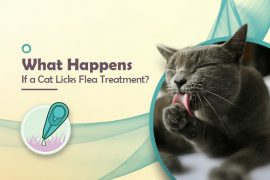As cat parents, it is our responsibility to prioritize the health and happiness of our feline companions. However, when it comes to declawing, a controversial practice that involves the surgical removal of a cat’s claws, we must pause and consider the potential consequences. In this blog, we will delve into the reasons why declawing is detrimental to your cat’s overall well-being. We will also explore alternative solutions that prioritize both your cat’s comfort and the preservation of their natural behaviors.
What is Declawing in Cats?
Declawing in cats, also known as onychectomy, is a surgical procedure that involves the removal of a cat’s claws. It is typically done to prevent cats from scratching furniture, people, or other pets. The procedure involves amputating the last bone of each toe, which includes the claw. Declawing can be performed using different methods, such as a scalpel, guillotine clippers, or laser. During the surgery, the veterinarian removes the claw and the surrounding bone, tendons, and ligaments. This permanently alters the cat’s anatomy and eliminates their ability to retract and use their claws.
It is important to note that declawing is a controversial practice and is considered by many as unnecessary and inhumane. The procedure can cause pain, discomfort, and potential complications for the cat. Cats may experience difficulty walking, changes in their gait, and long-term behavioral issues such as litter box aversion, aggression, or increased stress and anxiety.
1. Physical and Emotional Pain
Declawing is not a simple nail trim; it is a surgical procedure that involves amputating the last bone of each toe. This process can cause severe pain and discomfort for your cat, both during the procedure and during the recovery period. Cats may experience chronic pain, difficulty walking, and changes in their gait. Additionally, declawing can lead to long-term emotional distress, as cats rely on their claws for self-defense and to exhibit natural behaviors.
[Also Read] How to Keep Your Kitten Healthy and Happy
2. Increased Vulnerability
Without their claws, cats become more vulnerable in their environment. They lose their primary means of defense against potential threats, such as other animals or even accidents. Cats rely on their claws to escape dangerous situations or to climb to safety. Declawing compromises their ability to navigate their surroundings and puts them at a significant disadvantage.
3. Altered Behavior
Cats use their claws for various purposes, including stretching, climbing, and marking territory. Declawing deprives them of these essential behaviors, leading to frustration and potential behavioral issues. Cats may resort to biting as a means of defense, as they no longer have their claws to protect themselves. They may also develop litter box aversion or become more withdrawn due to the pain and discomfort associated with declawing.
4. Alternatives to Declawing
 Fortunately, there are humane alternatives to declawing that prioritize your cat’s well-being. These alternatives include:
Fortunately, there are humane alternatives to declawing that prioritize your cat’s well-being. These alternatives include:
Regular Nail Trimming:
Consistently trimming your cat’s nails can help prevent scratching-related issues. It is essential to use proper techniques and reward your cat with treats and praise to make the experience positive.
[Also Read] How to Trim Your Dog’s Nails at Home
Scratching Posts and Boards:
Providing your cat with appropriate scratching surfaces, such as scratching posts or boards, allows them to engage in natural behaviors while protecting your furniture. Encourage your cat to use these alternatives by using catnip or treats as incentives.
Nail Caps:
Soft nail caps can be applied to your cat’s claws to prevent scratching damage. These caps are safe, painless, and temporary, providing a practical solution for protecting your furniture.
Conclusion
Declawing is a harmful practice that should be avoided for the well-being of your beloved feline companion. By understanding the physical and emotional consequences of declawing, we can make informed decisions that prioritize our cat’s natural behaviors and overall happiness. Embracing alternatives such as regular nail trimming, providing appropriate scratching surfaces, and using nail caps allows us to maintain a harmonious relationship with our cats while respecting their innate needs. Remember, a happy and healthy cat is one with their claws intact.





